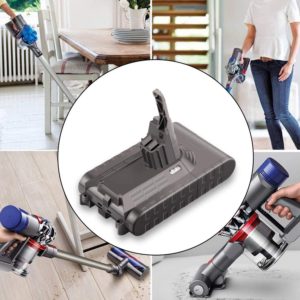Power tool manufacturers have come a long way in making cordless drills lighter, smaller, more powerful and more durable. Much of their focus has been on the batteries that power these tools, experimenting with new power tool battery technologies and fine-tuning current ones. Actually, by understanding the advantages and disadvantages of each kind of cordless power tool battery, maintenance and engineering managers can more effectively specify tools that best fit their departments’ needs.
Lithium-ion Power Tool Battery Circuits
One unique feature of Li-Ion battery packs is their protection circuits. These circuits extend battery life by maintaining cell balance when in use and recharging, providing added battery pack life, Sara says. “The electronics make sure all the cells work together as a team and that one isn’t pushed harder than the others.”

The electronics also ensure that the cells receive the same amount of power when recharging.
“The reason lithium-ion batteries have a protection circuit is actually the downfall of lithium-ion,” Wilkison says. NiCad and NiMH power tools do not require a computer circuit to manage the heat. With these types of batteries, design engineers can control heat in other ways, such as through tool design.
“The purpose of the electronic circuitry is to limit the amount of power that goes from the battery to the motor,” he says. “It’s not an added feature but a requirement to be able to use those tools. It protects users from severely damaging the Makita 1435 Power Tool Battery and making it inoperable in just one or two uses.”
Cordless Drill Power Options
Nickel cadmium (NiCad), nickel metal hydride (NiMH) and lithium ion (Li-Ion) are the three main types of batteries for cordless power tools today. Each one has unique characteristics.
NiCad batteries – currently the most commonly used type of battery — have been around the longest, are the least expensive, and are known for their high durability. Many manufacturers, however, believe newer battery chemistries offer greater potential in improving user productivity.
“NiCad has pretty much reached its peak, and now we’re seeing more and more innovations in battery technology,” says Kevin Fairchild, Hitachi Power Tools’ senior product manager for cordless electric power tools.
Managers should consider a battery’s service life when specifying tools. To determine its service life, users need to look at its run time and life cycle. Run time is the amount of work a tool can perform from one charge. Life cycle is the number of times a user can recharge a Makita tool battery. As the battery reaches the end of its service life, users often notice a decline in run time.
“End users often say one of their biggest frustrations is needing to buy new battery packs too often,” says Jeff Wilkison, director of product marketing for cordless tools at Bosch Power Tools. This can be particularly true for NiMH batteries, which generally have less life cycles than NiCad batteries.
“Individuals currently using a 18-volt NiCad battery, should see 2 – 2-1/2 times more work output from a V28,” says John Sara, cordless product manager for Milwaukee Electric Tool.
A battery’s amp-hour rating also helps end users determine its service life, Hi-tachi’s Fairchild says.
“People often just look at look volts when they should really concentrate on the battery’s amp-hour rating,” he says. While the volts relate to the tool’s power, they don’t indicate how long the battery will last. The higher the amp-hour rating, the longer the tool will run, he says.
Shrinking in Size
Along with longer run times and service lives, tool users continue to seek smaller, lighter-weight cordless tools that are easier to maneuver and carry. To meet this demand, tool manufacturers are focusing on ways to reduce the size and weight of the batteries that power these tools.
The size of a battery’s cells determines the size of the battery pack. The cells in a NiCad battery are larger than those in a NiMH battery, so an 18-volt NiCad battery is bigger and weighs more than an 18-volt NiMH battery.
“People are okay with the weight of an 18-volt NiCad battery, but anything more than that is really fatiguing,” Sara says, adding that 18-volt NiCad battery packs weigh about 2.4 pounds. Because 24-volt NiCad battery packs weigh more – about 3.3 pounds – they haven’t made a significant impact on the tool market.
The V28 pack weighs 2.3 pounds, Sara says. Thanks to Li-Ion’s chemistry, this line of power tools provides users with additional run time and power without the weight increase, he says.
Temperature Tolerance
One characteristic of NiCad batteries that makes them popular is their ability to perform in cold temperatures. According to Sara, NiCad batteries begin to lose their run time at temperatures below 20 degrees.
Of the three battery chemistries, NiMH performs the worst in cold temperatures according to some manufacturers.
“In our testing of NiMH batteries, we found that the cold-weather performance isn’t there,” Sara says. “They lose their run time in freezing temperatures. Because professionals are often working outside or the tools are stored in a cold truck, this is an unacceptable performance trade off.”
Sara says Li-Ion batteries have the best performance in cold weather, maintaining most of their run time down to about 0 degrees.
Although cold temperatures can hamper a battery’s performance, excessive heat can irreversibly damage a Dewalt DC988 Cordless Drill Battery. While manufacturers discourage users to store tools in hot environments, heat-related problems are more likely to occur while the tool is in use.
“Heat destroys the cells,” Wilkison says. “One of the most important things that power tool companies need to do is understand how to manage the heat that the battery cells generate.

